In line with the philosophy of slow-food, this project also develops unhurriedly. It is not the pace of the current fashion industry that we try to imitate; we are developing in our own pace of curiosity, thinking, testing and developing towards a new economic structure. It has already been months that I have returned from Guatemala and experienced wonderful and fruitful collaborations with Mayan weavers from different communities in Guatemala. I am very 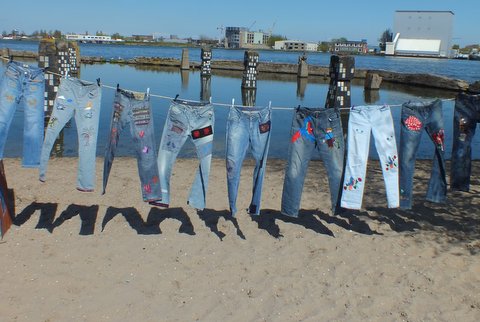 happy with the results and I am curious to see how the owners of the jeans will respond. Although not completely planned, the waiting for the owners also develops a desire and anxiety to see the jeans. This might be essential in the process of restoring the connection with the jeans. Below a picture of the jeans together in front of the “IJ” in Amsterdam. After I have handed over the jeans to the owners, I will show more detailed results and of course the documentation of this happening.
happy with the results and I am curious to see how the owners of the jeans will respond. Although not completely planned, the waiting for the owners also develops a desire and anxiety to see the jeans. This might be essential in the process of restoring the connection with the jeans. Below a picture of the jeans together in front of the “IJ” in Amsterdam. After I have handed over the jeans to the owners, I will show more detailed results and of course the documentation of this happening.
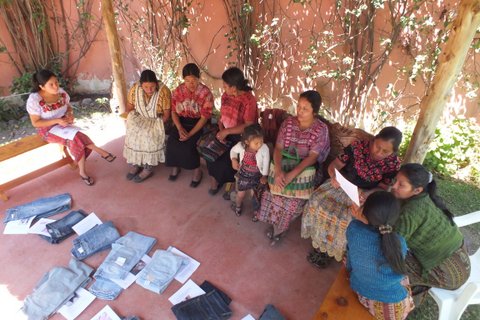 First of all I would like to share some results of the process. We started with a meeting where two representatives of three different communities joined us. We were very glad with the opportunity to bring the group together, as some participants had to travel half a day, which makes it difficult to meet often. Especially because the women are taking care of their families while their weaving activities are always done between housekeeping activities.
First of all I would like to share some results of the process. We started with a meeting where two representatives of three different communities joined us. We were very glad with the opportunity to bring the group together, as some participants had to travel half a day, which makes it difficult to meet often. Especially because the women are taking care of their families while their weaving activities are always done between housekeeping activities.
The workshop was initiated to familiarize with our different worlds of clothing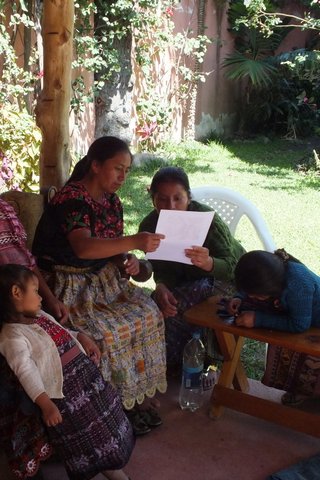 and to introduce my art project. Since we are not only speaking a different language but also affected with a completely different frame of reference, we want to to explore the potential energy. It is noticeable that the Mayan weavers are used to get clear assignments and I was not really prepared for that. During the preparation of the project, I was not intending to bring myself in a leader position. Being especially interested in their creative response, I was looking for collaboration on an artistic level. I‘m quite sure that this way of interaction creates more value than the economic value we are familiar with today. For me it was challenging to find my modus of interfering and to be completely consequent. I learned that every suggestion could be easily interpreted as an assignment. I was constantly confronted with this balance play between two cultures.
and to introduce my art project. Since we are not only speaking a different language but also affected with a completely different frame of reference, we want to to explore the potential energy. It is noticeable that the Mayan weavers are used to get clear assignments and I was not really prepared for that. During the preparation of the project, I was not intending to bring myself in a leader position. Being especially interested in their creative response, I was looking for collaboration on an artistic level. I‘m quite sure that this way of interaction creates more value than the economic value we are familiar with today. For me it was challenging to find my modus of interfering and to be completely consequent. I learned that every suggestion could be easily interpreted as an assignment. I was constantly confronted with this balance play between two cultures.
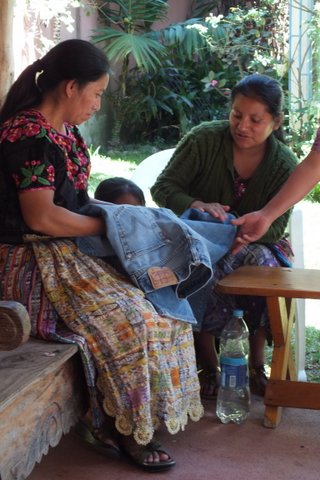 It was a profitable learning process, first of all for me, getting aware about my own identity. A personality that can be very present. I experienced how hard it is to cooperate with existing structures and additional trying to be completely consequent in your own aims. Something that is impossible as it is a new relationship you try to create in an existing structure. You can’t start from scratch since you have to deal with questions, habits, relationships and conditions of today’s world. But doing this and deviating from the existing path will create a new dialogue despite all the failures, frustrations and doubts we have to deal with.
It was a profitable learning process, first of all for me, getting aware about my own identity. A personality that can be very present. I experienced how hard it is to cooperate with existing structures and additional trying to be completely consequent in your own aims. Something that is impossible as it is a new relationship you try to create in an existing structure. You can’t start from scratch since you have to deal with questions, habits, relationships and conditions of today’s world. But doing this and deviating from the existing path will create a new dialogue despite all the failures, frustrations and doubts we have to deal with.
I can illustrate this with an example: During my visits to the communities I could follow the work in process. Sometimes I felt that the Mayan weavers were not responding on the story resulting, in my opinion, into decorated jeans. I had to question my role as an artist that tries to create a different structure and relationship with their own artistic freedom. Furthermore, I strongly felt that I did not want to disappoint the owners of the jeans and that I had to fulfill their expectations. This feeling was particularly strong because they had paid for the “product” (60euros). Ironically this money made me feel responsible using the standards of current structures (creating a satisfying consumer 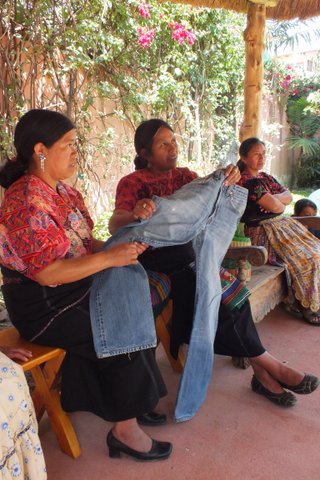 experience focussing on the end product), that I interfered occasionally more than I wished. At the same time, I had to interfere with my knowhow and bring the Mayans out of their comfort zone away from their reproductive manner they are used to work. In this sense we are all beginners that try to find new ways of dealing with the material. For the future I have learned that we should use more pictures supplementing the story, as this facilitate interpretation. Despite or due to this process, we were able to create visible and sensible connections between the maker and the owner of the jeans. More than I could have imagined before and beyond the concept of DenimEconomics. Read more about Denim Economics here.
experience focussing on the end product), that I interfered occasionally more than I wished. At the same time, I had to interfere with my knowhow and bring the Mayans out of their comfort zone away from their reproductive manner they are used to work. In this sense we are all beginners that try to find new ways of dealing with the material. For the future I have learned that we should use more pictures supplementing the story, as this facilitate interpretation. Despite or due to this process, we were able to create visible and sensible connections between the maker and the owner of the jeans. More than I could have imagined before and beyond the concept of DenimEconomics. Read more about Denim Economics here.
Get an impression of our first meeting and conversation with Guatemalan weavers about clothing (in Spanish/K’che’):
Weaving a story (in Spanish/K’che’):
An interpretation of the story (in Spanish):